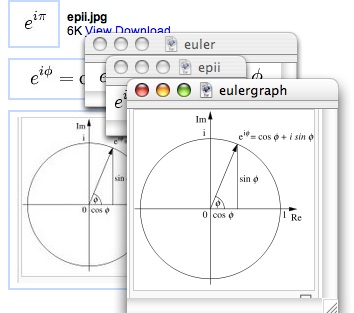
civil rights conference here at harvard april 26. open knowledge conference at yale on the 27th. mobilization is the theme. pat will send our invitation out to those who atteneded the user generated content conference in dc. all invited to is2k7 to mobilize university to see and reach for its mission in cyberspace to educate the children of the world. teach them from the age of three to come to university. teach teachers how to offer threads to follow scratched in code they can unravel. points of departure for young minds to go that lead them to the land of open knowledge.
last night i sat with becca and dean to plan our open channel. amanda congdon email here dropped in later as flow rolls on to mitch, email dropped in here, flows on to the pee-da-HAN, the culture that everett writes about in contest with chomsky with input from pinker and tecumsah fitch. fern fascinated by it led me in to conversation with rebecca about recursion. is it the fundamental element of thought. is it the fundamental element of language. is it what enables our minds to be conscious.
makes sense to me.
what then in the culture of the peedaHAN makes their minds so strong that they can resist the delight of thinking past and future? everett says their focus is the present on it so strong they have no interest in anything back or beyond. one would think a trait so strong must be trained into a baby’s mind very young and very strong to so sharply curtail its natural curiosity and delight in learning. drop in email chomsky.
marc hauser, of hauser fitch chomsky 1994, will be at our poker meeting april 24. i’ve asked steve pinker to attend, have not heard back. noam turned me down. he hasn’t played poker in years. drop in email here. greg raymer, annie duke, andy bloch, howard lederer, and still hoping for chris jesus furguson, have you a model lurking in your minds of how recursion explains poker skill.
Recursion refers to a procedure that calls itself, or to a constituent that contains a constituent of the same kind, set within set. Recursion enables infinite complexity from finite input. the complexity we see. can we see simplicity.
e п i
Theoretical computer scientists often distinguish between tail recursion and true recursion. Roughly, in tail recursion, a procedure invokes another instance of itself as a final step (or, in the context of language, a constituent contains an identical kind of constituent at its periphery). In true recursion, a procedure invokes an instance of itself in mid-computation and then must resume the original procedure from where it left off (or a constituent contains an identical kind of constituent embedded inside it). True recursion requires a computational device with a stack of pointers (or an equivalent mechanism) to keep track of where to return after an embedded procedure has been executed. Tail recursion can be mimicked (at least in input-output behavior or “weak generative capacity”) by a computational device that implements simple iteration, where one instance of a procedure can be completed and forgotten by the time the next instance has begun. drop in mandelbrot . Tail recursion, however, cannot be mimicked by iteration when it comes to computations that require more than duplicating input-output behavior (“strong generative capacity”), such as inferences that depend on the grouping and labeling of constituents.
what is different about the peedaHAN
how are they not thinking like us
how are we knot thinking like they
eon
0 Responses to “win or lose you pay your dues”